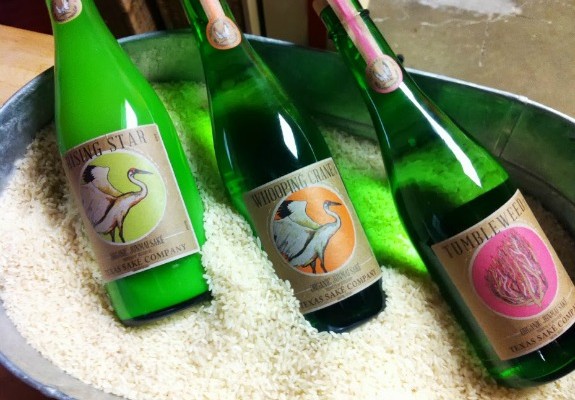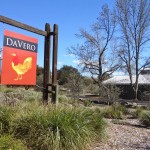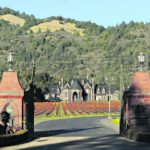What’s Fueling the American Made Sake Movement

It’s a revolution that was bound to happen.
Benefitting from the popularity of the local craft beer movement, other drink-lovers’ favorites are going through their own ‘made in America’ revival, including kegged wines, spirits, and cocktails.
The fact that American tap pioneers are now manufacturing sake in the Land of the Free could is however quite unsettling: sake, a beverage that screams Japanese, much like as samurai or geisha culture, Nikon cameras, and Tamagotchi, should be the sole monopoly of the Asian country that first invented it, after all.
Yet, against all odds, American sakes are rapidly becoming the latest ‘it’ beverage – a trend that is facilitated by an increased customer appreciation, the existence of sake factories spread across the country, and most recently, industry recognition – a factor that makes all the difference with distributors.
At The Joy of Sake, the largest sake tasting event outside Japan, an ever-increasing number of the brands featured are made in the good ol’ U.S. of A. In 2011 and 2013, Takara Sake USA’s Shochikubai Junmai Daiginjo, made in California, won a gold medal in the U.S. National Sake Appraisal, the largest international event of its kind: over 350 varieties of sakes are evaluated ‘blind’ by a panel of judges from Japan and the U.S.
And considering the weight of tradition in the Japanese-centric sake world, this was no easy feat. A fragrant fermented rice wine that boasts a cult following of its own, sake has been manufactured in Japan for centuries. In the U.S., sake making only began some 30 years ago, when Japanese sake artisans left the Land of the Rising Sun to pursue their American Dream.
Bringing techniques honed over the years of isolation of the Shogun rule and an unparalleled mastery of processes, their brewing is in line with tradition: Rice is steamed, then mixed with koji, a fungus that allows grains to ferment and germinate faster so that they break down precious starches. This koji rice is then mixed with water, yeast and regular steamed rice to make a thick porridge, moto. After more fermentation, this liquid is pressed out: sake.
Basic and young in its beginning, American sake are now mature, fragrant and developed libations. Extremely smooth, balanced, and fragrant, they are also extremely diverse in types (junmai or ‘pure rice’ sake, ginjo, brewed using highly polished rice, nama or ‘fresh or raw’, nigori, an unfiltered sake, etc,…) as well as flavors. Premium sakes are now being produced.
They are also typically certified kosher, which is the case for only a few of the sakes that are made in Japan, and makes it easier for American sake brewers to tap into a market that was long forgotten by their Japanese rivals.
Another difference is the fact that American sake brewers have not embarked on the production of honjozo sake, a type of sake where alcohol is added to the brewery process – but most likely haven’t done so because fortified sake is taxed at a much higher rate than regular sake in the U.S.
For these savvy pioneers, betting on the U.S. wasn’t far-fetched considering how fertile, well-endowed and fit for sake making the American soil truly is.
To produce sake, you need two things: superb rice, and superb water. Both influence the taste. Just like breweries set their facilities near good water sources, supply has determined the location of sake factories in America. The founder of SakeOne, for instance, chose Oregon for the quality of the water supply in the Northwest when they established the brewery in 1992.
And if you think that finding good rice in would be an issue, don’t be too quick to undermine the quality of local rice.
As a matter of fact, it was the world-class quality of the rice grown in the Sacramento Valley, not only the water that prompted Takara to locate its factory in Berkeley. Indeed, the rice is a product of a hundred years of breeding with a Japanese variety, resulting in a slimmer, longer grain that makes for a tame, but sweet and complex taste when polished.
Others have decided to preserve the artisan spirit of craft making and explore the unique taste of namazake, a sake that has not been pasteurized and, therefore, cannot travel. Based in Minneapolis, Moto-i Ramen House, and Sake Brewery produces small batches of its namesake sake. Made on site, it is stored cold for a fresh and lively flavor.
The popular brewery is recently created two limited editions Ginjo grade Tokubetsu sake (‘special’ sake), a Junmai Ginjo 1800, made using a yeast strain that is almost always reserved for Ginjo (premium) grade sake, and a Junmai Ginjo AK-12, a Junmai that is very light on the palate with an assertive alcohol warmth and hints of marshmallow.
So far, the response has been more than positive. This year’s production of Junmai Ginjo AK-12 was double what it was the year before due to its overwhelming popularity.
Humble and passionate, American sake producers also have fun with it. Moto-i, for example, organizes Fantasy Sumo tournaments every two months. During two weeks, clients can indulge in their favorite Japanese game while indulging in their other favorite aspect of Japanese culture – food, and artisan-made sake.
A lot more can be done to allow American sake artisans to thrive – and their greatest battle ahead is perhaps education. From teaching customers how to best pair sake with food to fighting the common prejudice against ‘the inferior quality of warm sake’ or promoting sake’s health benefits, Americans are bound to hear a lot more about sake in the sake couple of years…
















